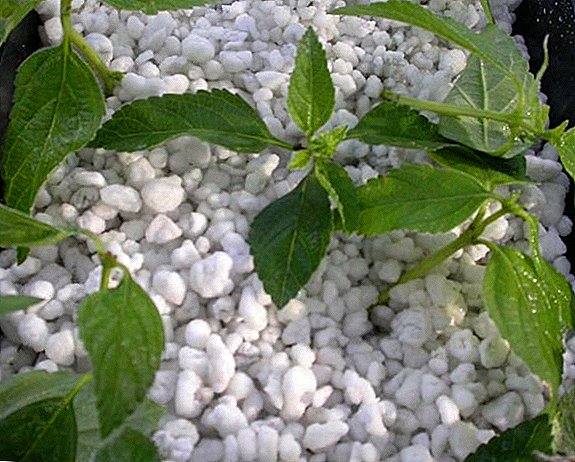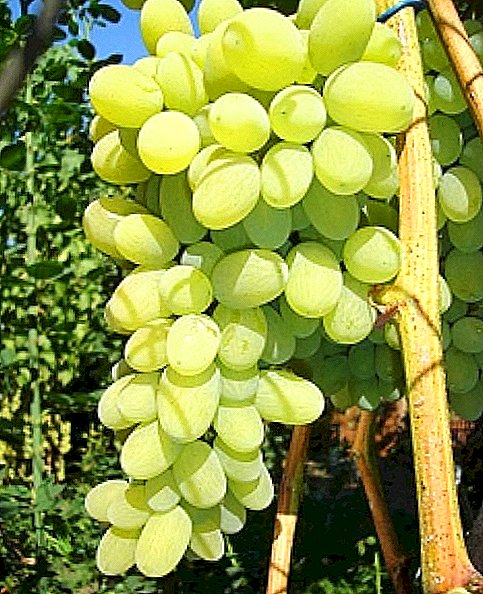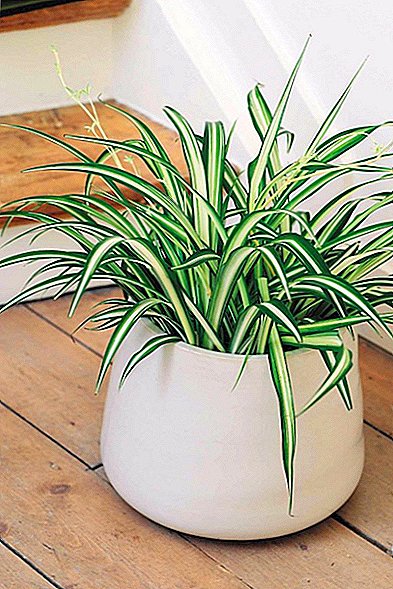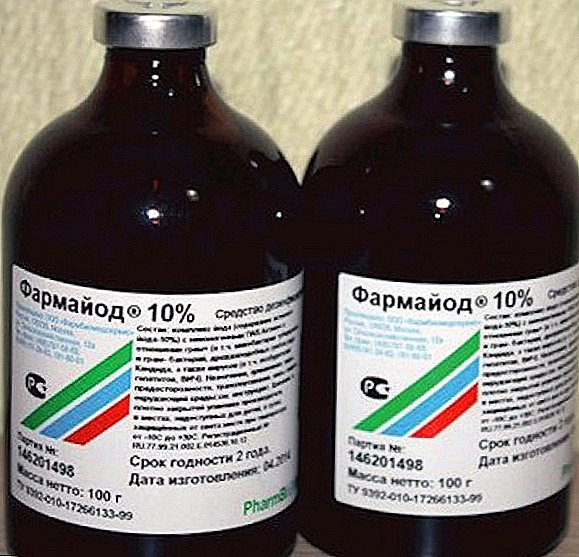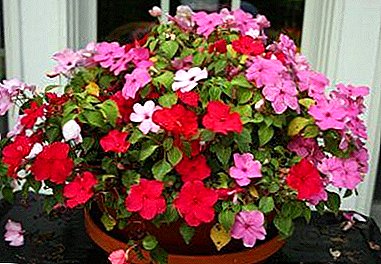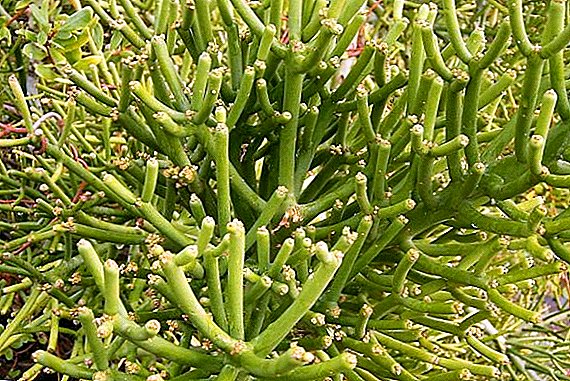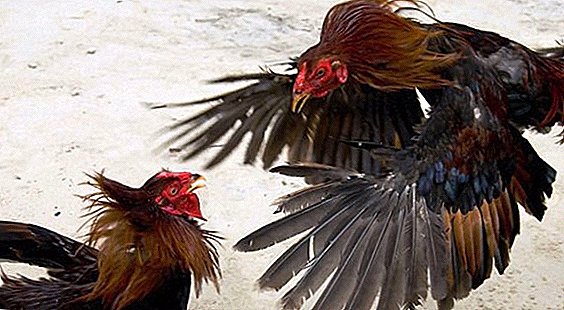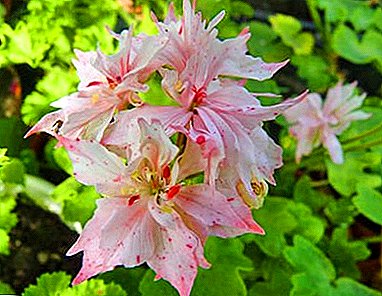
Geranium - plants, common in many homes. Owners they are pleased with a variety of varieties and species, differing in the form of leaves, size of flowering, double flowers and rare flowers.
Each gardener chooses his favorite look, one of these is the star-shaped pelargonium.
The article will look at where and how to plant this variety, as well as how to care for the flower. Also learn from what pests and diseases can suffer.
Botanical description and history
There are several types of pelargonium of this type:
- Pelargonium star Moscow region. It has simple flowers, characterized by friability.
- Pelargonium stellate. It has double flowers, rather dense and crowded around the peduncle.
They got their name because of the uneven edge of the leaves, from a distance like stars. The main difference is in flowering, which helps to distinguish between the two species. Both were obtained by crossing several varieties and were developed over a fairly long amount of time.
Appearance and features
Geranium of this species is distinguished by specific leaves, the flower of the plant may vary in shape or size, depending on the specific variety. The leaves come in a variety of colors, some are green, others shimmer in a pleasant golden hue in the sun.
Flowers are different, some dense and terry, others are simple and friable. Combinations are different, but they all look great and resemble a small number of butterflies.
Photo Stars Moscow region
Below are photos of the flower.





Where and how to plant it?
The plant is usually planted in a pot, at least 25 centimeters high. The pot must contain a good drainage system, because geranium does not like a lot of moisture and will start to rot.
- The first layer is necessary to lay expanded clay.
- Then the main layer of soil.
- Top two centimeters of sand.
We plant the plant and sprinkle it on top with earth. The plant should be watered for the first time.
Lighting and location
Important! Pelargonium refers to a number of light-loving plants that can tolerate the sun, but do not like direct rays that can burn leaves.
Moreover, if the plant is standing in the sun and is on the street, then it is not prone to overheating and may be in the sun. But do not place the flower on the window under direct rays. Every few days the flower should be rotated relative to the source of light so that the leaves do not dry and fall because of high temperatures.
Soil requirements
 This flower belongs to the group of zonal geraniums that require extra care and care. The soil for the flower should be slightly acidic. Optimum acidity from 6 to 7 pH. Before planting, the soil should be mixed with peat and sand.
This flower belongs to the group of zonal geraniums that require extra care and care. The soil for the flower should be slightly acidic. Optimum acidity from 6 to 7 pH. Before planting, the soil should be mixed with peat and sand.
When the flower is growing, the soil should be fertilized with minerals. The best option would be bought in the store soil, which is designed specifically for pelargoniums. Otherwise we mix in equal proportions:
- turf;
- peat;
- sand;
- leaf ground.
Care
Among the basic rules of care should be the following:
- Watering. Plants need to be moisturized, but with strong moisture they begin to rot and ache. Therefore it is necessary to organize a watering system and stick to it. It is better to water the plant in the morning. In the summer, do it once a couple of days, and in the winter, when the first layers of soil dry up.
- Fertilizer. Fertilizer for flowers should be made in the evening in a moist soil. In the summer, you can feed once a week, and in the autumn-winter periods once every three to four weeks. In winter, the plant needs nitrogen supplements, and in the summer in potassium and phosphorus.
- Transfer. If necessary, the geranium must be transplanted. If it already does not fit in its former pot, then you need to choose a container that is only one and a half to two centimeters more than the previous one. It is necessary to transplant a plant when it has begun to leave hibernation, which means in the beginning of spring.
- Crop. New shoots must be pruned so that the plant can continue to grow. All dried leaves and shoots also need to be removed.
Common diseases and pests
 If you do not follow the basic rules of care, the plant can get sick or be affected by pests. When growing a flower, the following difficulties may arise that are not difficult to solve.
If you do not follow the basic rules of care, the plant can get sick or be affected by pests. When growing a flower, the following difficulties may arise that are not difficult to solve.
- Edema. Soft watery pillows appear on the leaves. Overmoistening of the soil usually becomes the cause. In this case, for some time you need to limit watering, and then water the plant on the basis of the system of organizing watering.
- Leaf fall. If the leaves dry or fall off, this indicates a lack of light. Spots on the leaves indicate that the flower is in direct sunlight.
- A series of rot. It is necessary to regularly examine the stems and leaves for the appearance of rot. In this case, you need to remove all damaged areas, if the plant has been completely flooded, then it is important to transplant it into another pot with a good drainage system. And treat the damaged place with a fungicide. Plants that are nearby, also need to handle the tool.
Breeding features
The star-like geranium can multiply in several ways:
- Seeds.
- Cuttings.
Seeds
- Seeds need to be planted in the soil prepared in advance or ready, purchased in the store.
- The soil must be fertilized, the pot must not be less than 25 centimeters, and the soil should be sandy on top.
- After planting, it is necessary to irrigate the soil abundantly and close the pot with foil, creating a small greenhouse.
- Approximately in two weeks shoots appear, then it is necessary to open the film once a day and air the seedlings.
- When two leaves appear on each, they can be seated in different pots.
Cuttings
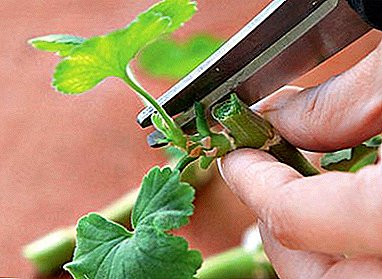 From the old plant, cuttings are cut off, which need to be left in a glass with water for several days until the roots appear, or left in a damp place, you can wrap in a damp cloth and moisten it regularly.
From the old plant, cuttings are cut off, which need to be left in a glass with water for several days until the roots appear, or left in a damp place, you can wrap in a damp cloth and moisten it regularly.- Then the process can be planted in the ground.
Cuttings can be cut in the warm season, but only from a healthy and strong plant, so as not to harm him.
With proper care and extra attention, the plant will delight in flowering for a long time. Observe the watering mode, choose a place with enough light and the absence of direct sunlight, and in the summertime you will carry the plant to a balcony or loggia, it will maintain a healthy look.


 From the old plant, cuttings are cut off, which need to be left in a glass with water for several days until the roots appear, or left in a damp place, you can wrap in a damp cloth and moisten it regularly.
From the old plant, cuttings are cut off, which need to be left in a glass with water for several days until the roots appear, or left in a damp place, you can wrap in a damp cloth and moisten it regularly.